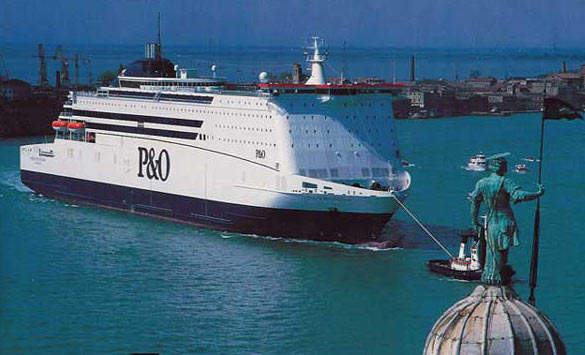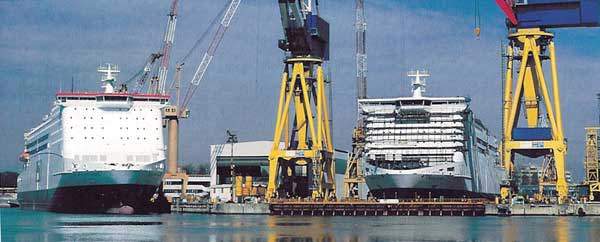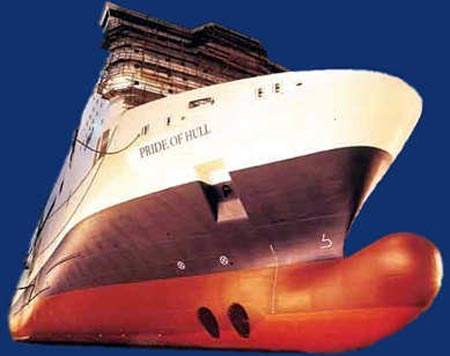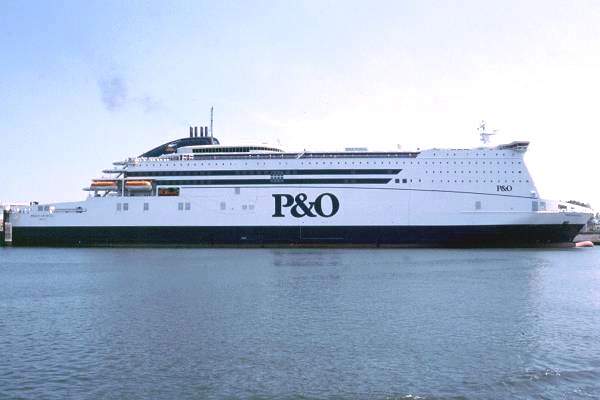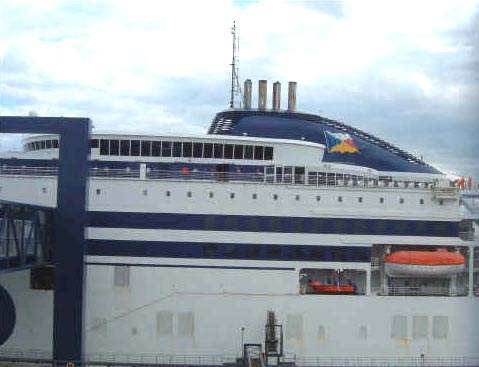The Pride of Hull is one of the world’s largest ferries and, along with its sistership, Pride of Rotterdam, works the route between the ports of Hull and Rotterdam. The construction of the ferries was carried out at Fincantieri’s Marghera yard in Venice. The Pride of Hull took less than 14 months to build.
The Pride of Hull replaces the multi-purpose Norsea and Norbay. Norsea has been transferred to the Hull-Zeebrugge route. Norbay moves to the Dublin-Liverpool route operated by P&O Irish Sea.
The Pride of Hull has an overall length of 215.1m (203.7bpm) and a moulded beam of 31.5m. It has a design draught of 6.05m and a 9.4m depth to the main deck. It is also 59,925gt, making it the biggest ferry in the world in terms of gross tonnage. It has a design deadweight of 8,800t and a scantling deadweight of 10,350t.
CRUISE DINING AND ENTERTAINMENT
The Pride of Hull’s facilities are based over 12 decks. The main public rooms and services centre around atrium area on Decks 8 and 9. Deck 8 incorporates the bureau de change, the continental and cyber cafés, shops and a childrens’ area, as well as the hotel facilities reception. Dining facilities are located aft.
The entertainment facilities include a casino, Irish bar, two cinemas and a double-deck show lounge.
Deck 9 boasts a fully equipped business centre, wine bar and a la carte restaurant. There as also a lounge bar and restaurant exclusive to freight drivers.
Decks 8 and 9 are connected by processional staircases port and starboard, while all the connecting decks are accessed by a main stairtower.
The Pride of Hull has 546 cabins with a total of 1,376 beds. Passenger cabins are forward on Decks 8, 9 and aft on Deck 7, as well as being located throughout Deck 10. A crew of only 141 manages the vessel and they are accommodated on Deck 11.
At the base of the funnel on Deck 12 lies a multi-functional sky lounge (the only public space), designed for access outside to the teak-planked sundecks. This sky lounge also serves as a piano bar and breakfast area.
PRIDE OF HULL AND VEHICLES
For speed of turnaround, the car deck on the Pride of Hull is accessed through a side entrance in the ship and is consequently separated from the main freight deck entrance. The 2.7m-high car deck is designed to accommodate 250 cars, caravans, etc.
The freight capacity of the Pride of Hull is 3,345 lane metres. These freight decks are accessed via an 18m-wide by 12.5m-long stern door/ramp from Hamworthy KSE. The main deck is completely flat for easy loading of trailers. On boarding, the vehicles travel up one side of the vessel, turn in the spacious bow area and then proceed back towards the stern on the other side.
On Deck 3, a total of 1,483 lane metres (3.1m wide, 7m high) can be employed, while on Deck 5 the upper trailer deck is accessed via two Hamworthy KSE hoistable ramps, giving a further 1,560 lane metres. Each ramp is 58m long and 3.4m wide. While the deck is 4.8m in height, it is open aft which permits the carriage of hazardous cargo. At the aft end of Deck 7 there is an exclusive area for drivers featuring 14 single and 39 double cabins.
SHIP ENGINES
The Pride of Hull ferry is powered by four Wärtsilä NSD 9L46C engines, which deliver a total output of 37,800kW at 500rpm. The ferry also has two Wärtsilä 9L32 auxiliary engines which give an output of 4,050kW at 720rpm. The engines are linked via a Schelde reduction gear to two Lips highly skewed propellers, 4.9m in diameter. This gives the vessel a service speed of 22 knots. Two Fincantieri 2,000kW bow thrusters manoeuvre the ferry.

